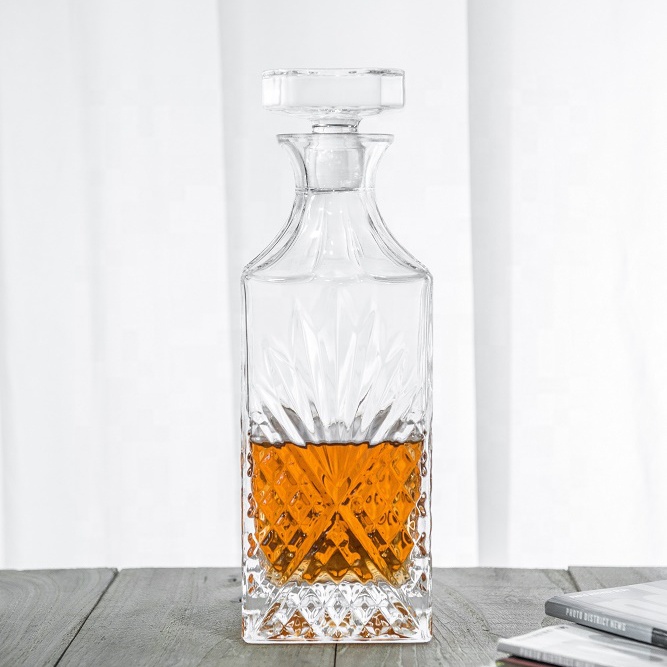Cognac vs. Armagnac vs. Calvados: The Essential Variations
The world of brandy is massive, spanning crystal-clear eaux-de-vie and amber-hued digestifs. Inside this wide-ranging panorama lie three fruit brandies from France: Cognac, Armagnac, and Calvados. Every is a selected spirit with its non-public base substances, space of origin, manufacturing practices, and naming conventions.
Correct proper right here’s a data to understanding the nuances of Cognac, Armagnac, and Calvados.
Cognac vs. Armagnac vs. Calvados Quick Data
• Calvados is constructed from apples and normally pears, whereas Armagnac and Cognac are grape-based.
• Cognac shares its set up with the southwestern area of France the place it’s made; Armagnac is from shut by Gascony; and Calvados have to be made in Normandy, in northwestern France.
• Every brandy should age in oak barrels for not decrease than two years before it’s bottled.
• Cognac should bear double distillation in a copper pot nonetheless, whereas Armagnac usually undergoes single distillation in a specific column nonetheless. Relying on its appellation, Calvados could also be distilled a couple of events.
• Every has a minimal ABV of 40%, although Armagnac normally has the next ABV of spherical 45–48%.
What Is Cognac?
Cognac is a grape-based brandy that shares its set up with the world of southwestern France the place it’s made. Like Calvados and Armagnac, it’s a geographically protected spirit with a protracted historic earlier. Many hint its origins to the sixteenth century, and credit score rating score a former French navy officer, Chevalier de la Croix-Marron, with fine-tuning its double distillation course of in 1610. Cognac obtained an managed designation of origin (AOC) in 1938.
Cognac have to be constructed from ugni blanc (the most typical), folle blanc, colombard, or completely completely different grapes grown all by way of the six crusor appellations, of its namesake area. These grapes are fermented correct proper right into a low-proof wine—usually 9% ABV or quite a bit a lot much less—and distilled twice in copper pot stills. From there, the eau-de-vie ages in Limousin or Tronçais oak barrels for not decrease than two years. Most Cognacs are blended from absolutely completely completely different barrels, nonetheless like Calvados and Armagnac, they will furthermore might be present in vintages (a mix of barrels from the an similar harvest yr).
To find out how extended a particular Cognac bottling was aged, look for constructive initials on the label. VS means it spends not decrease than two years in oak; VSOP Cognac ages for 4 or extra years; XO ages for not decrease than 10 years; and XXO Cognacs spend 14 years or extra in oak.
Most older Cognacs are sipped neat, whereas youthful bottlings function in all types of typical cocktails, together with the Sidecar, Vieux Carré, and the criminally underrated Between the Sheets.
Cognac Quick Data
• Constructed from white wine grapes, principally ugni blanc
• Produced all through the Cognac area of France
• Distilled twice in a copper pot nonetheless
• Ages in Limousin or Tronçais oak barrels for not decrease than two years, although many age for for for for much longer
• Majority of Cognacs are blends, nonetheless some producers make vintages (a mix of eaux-de-vie from the an similar harvest yr)
What Is Armagnac?
Armagnac is a grape brandy that hails from three geographically protected areas of Gascony in southwestern France. Its historic earlier hyperlinks some 700 years of Roman, Arabic, and Celtic traditions, and a few give it some thought’s France’s oldest form of eau-de-vie or fruit brandy.
In 1936, Armagnac turned an AOC product in France, so governmental decrees now decide the place it could possibly be made and the best way by which. To qualify as Armagnac, the brandy ought to return from the Bas-Armagnac, Armagnac-Ténarèze, or Haut-Armagnac areas of Gascony. There are 10 grape varieties permitted to make Armagnac, the most typical of which could be ugni blanc, baco blanc, folle blanche, and colombard.
Manufacturing is equally regulated. Grapes have to be vinified, or reworked into wine, with out sulfur and rested on their lees (residual yeast) all through the fermentation vessel before they’re distilled. The overwhelming majority of Armagnac is distilled as shortly as in a particular common nonetheless commonly known as an Armagnac nonetheless. Distillation should happen by March 31 of the yr following the grapes’ harvest.
After distillation, the clear spirit is aged in 400-liter new oak barrels wherever from six months to 2 years, after which it’s transferred to impartial oak barrels for continued getting outdated. Labeling conventions to degree age use an entire lot of the an similar terminology as Cognac and Calvados, although the durations differ. VS (“Very Particular”) Armagnac spends not decrease than one yr in oak; VSOP (“Very Particular Earlier Pale”) ages for not decrease than 4 years in oak; Napoleon or XO is oak-aged for six years minimal; and the spirit used to make hors d’age Armagnac simply is not decrease than 10 years earlier. Value noting, Armagnac normally ages for an extended time interval than Cognac.
Armagnac may even be categorized primarily based on grape origins. Spirits made with grapes grown all by way of the three designated areas are normally commonly known as “easy” Armagnac. If there’s a yr on the label of a single-vineyard Armagnac, nonetheless, which suggests your entire grapes had been grown in a single plot of land, and the spirit was aged for not decrease than 10 years before it was bottled.
Normally, Armagnac is served neat, at room temperature as an after-dinner drink. Clear Armagnac, furthermore commonly known as white armagnacis liable to be chilled or poured over ice. In French-influenced kitchens, Armagnac is usually used as an ingredient in sauces, to flambé, or poured over ice cream.
Armagnac Quick Data
• Constructed from white wine grapes, principally ugni blanc, baco blanc, folle blanche, and colombard
• Produced all through the Gascony area of France
• Most frequently distilled as shortly as in a specific column nonetheless commonly known as an alambic Armagnacais
• Ages in French oak for not decrease than two years, although many age for for for for much longer
• Is accessible in blends and vintages
• Generally has the next ABV than Calvados and Cognac, spherical 45–48%
What Is Calvados?
Calvados is an apple (and normally pear)-based brandy from Normandy, an area in northern France. Its legacy dates to not decrease than the 1790s, when historians take into consideration the time interval Calvados was first used, although data date cider distillation in Normandy to 1553.
As with Champagne, the spirit is AOC-protected, which implies the French authorities regulates what can and can’t be labeled Calvados. Qualifying spirits begin with apples and pears grown absolutely in designated areas of Normandy. The fruit is fermented correct proper right into a dry cider, then distilled proper into a transparent spirit in pot or column stills. Lastly, Calvados spends not decrease than two years in French oak barrels before it’s bottled. All by way of that point, it develops a darker hue and wealthy flavors. Earlier than bottling, absolutely completely completely different barrels are normally blended to make sure a harmonious product, nonetheless producers furthermore make conventional Calvados with a mix of barrels from the an similar harvest yr.
Everytime you’re in a bottle retailer observing a shelf of Calvados and questioning how extended each was aged, look for constructive phrases on the labels, which is able to degree out the yr of the youngest eau-de-vie all through the mix. “Fine quality” or “VS” means the spirit spent not decrease than two years in oak before it was bottled. After 4 years in oak, Calvados might very nicely be labeled VO or Vielle Reserve, which stand for “very earlier” and “earlier reserve,” respectively. These aged for six or extra years is liable to be commonly known as XO, which roughly interprets to “further earlier”; Tres Vieux, or “very earlier”; or Napoléon.
Calvados furthermore has three distinct appellations primarily based on geography and manufacturing strategies. Calvados AOC is the generic appellation and permits for every a column or pot nonetheless for distillation; Pays d’Auges denotes Calvados that was double-distilled in a copper pot nonetheless, leading to a richer and rounder type profile; and Domfrontais is understood for the intense proportion of pears, normally spherical 60%, all through the eau-de-vie.
Calvados is an growing variety of straightforward to go searching all through the U.S. In response to the Interprofession des Appellations Cidricoles (IDAC), a cider commerce group, exports to the U.S. grew 70% in 2021 and as quickly as further in 2022.
Serve Calvados at room temperature in a tulip-shaped glass, as an after-dinner drink, or as a Norman gapa typical palate cleanser between packages. Or deal with it like many American bartenders do and blend it into cocktails similar to the Calvados Sidecar or bubbly Forbidden Apple.
Calvados Quick Data
• Constructed from cider apples and normally pears
• Produced all through the Normandy area of France
• Might be distilled utilizing a column nonetheless or a pot nonetheless relying on the appellation
• Ages in French oak for not decrease than two years, although many age for for for for much longer
• Is accessible in blends and vintages
Cognac vs. Armagnac vs. Calvados: What’s the Distinction?
Cognac, Armagnac, and Calvados are all fruit brandies from geographically protected areas of France with a minimal ABV of 40%. They need to age in oak barrels for not decrease than two years before bottling, and all might be present in blends and vintages. Nonetheless, that’s the place their similarities finish.
Calvados is constructed from apples and normally pears, whereas Armagnac and Cognac are grape-based. Every hails from a selected nook of the nation, with Calvados produced in Normandy and Armagnac and Cognac in southwestern areas of France. Armagnac and Cognac are made with a few of the identical grape varieties, nonetheless the place these grapes had been grown factors. As an illustration, you may’t take ugni blanc grapes grown in Cognac over to a distillery in Bas-Armagnac after which attempt to make Armagnac.
Manufacturing varies, too. Cognac should bear double distillation in a copper pot nonetheless, whereas Armagnac usually undergoes single distillation in a specific column nonetheless; Calvados could also be distilled a couple of events. Armagnac should leisure on its lees (or work together with the residual yeast in a fermentation vessel) before it’s distilled, and the fruit would possibly need to have been not too approach again harvested. What’s extra, Armagnac normally ages for longer than Calvados and Cognac and is bottled at a barely greater power.




:max_bytes(150000):strip_icc()/versus_pernod-ricard_1200x628-d771c3f6e8044907a06f708cf05caadd.jpg?w=1200&resize=1200,0&ssl=1)
:max_bytes(150000):strip_icc()/LQR_Edit-ScotchVSAmericanMalt_Facebook-1200x628-7d2a370ee27247aab02285e711fe7b55.jpg?w=1200&resize=1200,0&ssl=1)
:max_bytes(150000):strip_icc()/chenin-blanc_fb_1200x628-e28d280625da48b5ac6c7acd3c8504a4.jpg?w=1200&resize=1200,0&ssl=1)